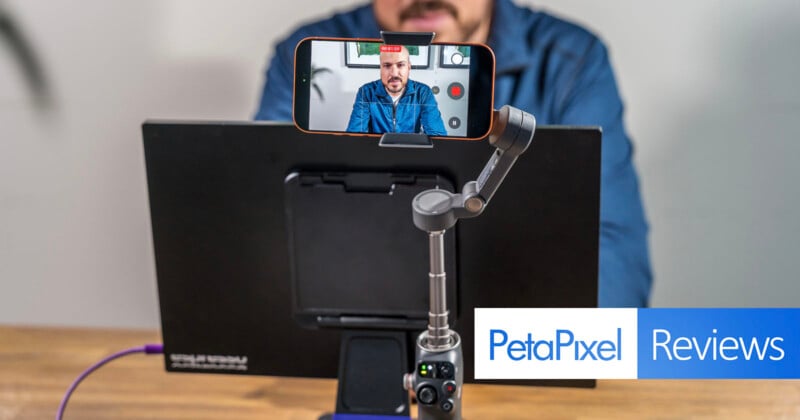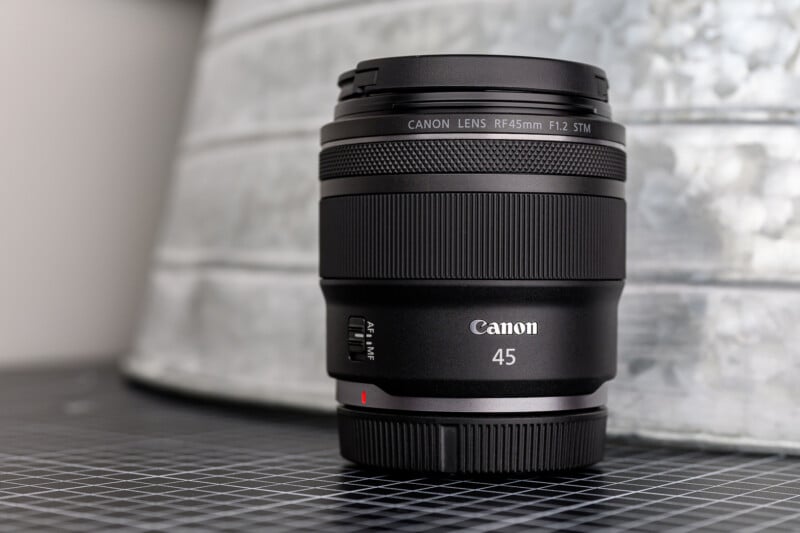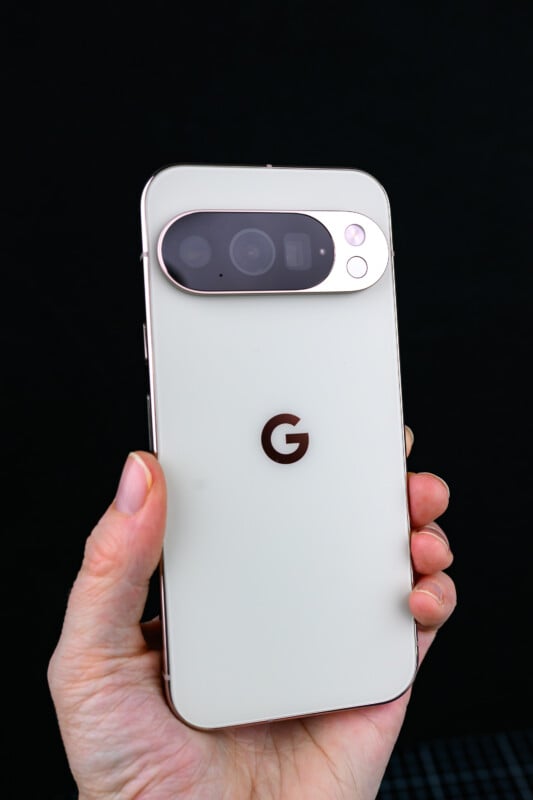
Smartphone season is here, and, as usual, Google is starting things off. The Pixel 10 series has arrived, and although a telephoto lens has now been added to the base model, we prefer to evaluate the highest-end Pro series for its creative photo and video usage. At first glance, the specs and hardware look almost unchanged from the previous models. So is new software enough, or is this the most iterative update Google has ever released?
We get the same sensor sizes and lens specs. The same 6.3- and 6.8-inch sizes on the LCD screens as last year. We even get the same body dimensions, which at least means that an older case would still fit. If all the changes are software and AI-based, can Google really make the 10 Pro and Pro XL worth the extra cost? As usual, I will be focusing on the photo and video capabilities only, and will stick to notable changes that I find exciting rather than giving a full overview of the phone in its entirety.

Google Pixel 10 Pro Review: The Phone
We may have the same screen sizes as the previous models, but the screens are slightly brighter with an improved 2,200 nits of brightness overall and a max peak of up to 3,300 nits. This represents about a 10% improvement over last year’s models. The 10 series uses somewhat faster Tensor G5 processors on a 3nm architecture, and storage options are about the same, with a maximum of 512GB of storage available on the 10 Pro models. Google has finally caught up with Apple’s MagSafe conveniences by offering its own version called PixelSnap. This and all of the others are all variations of the magnet-based Qi designs and allow for cross-compatibility with magnetic chargers and phone accessories across the board. It’s a great addition that I’m happy to see here.
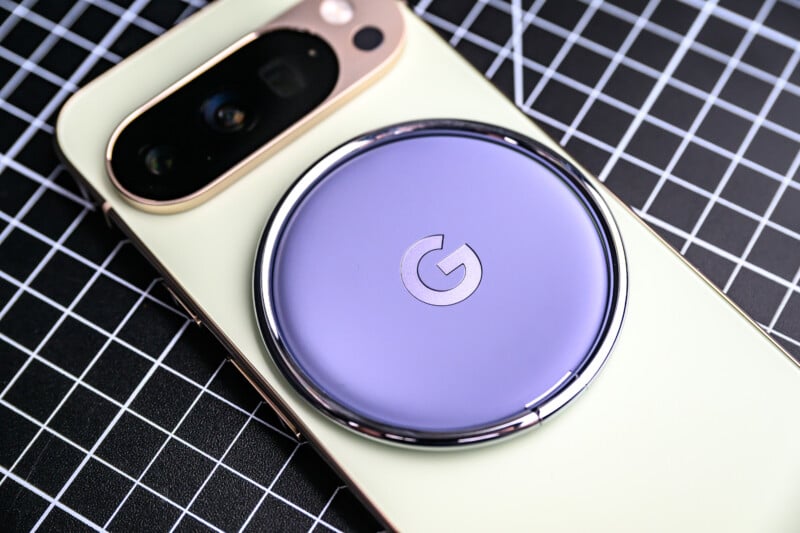
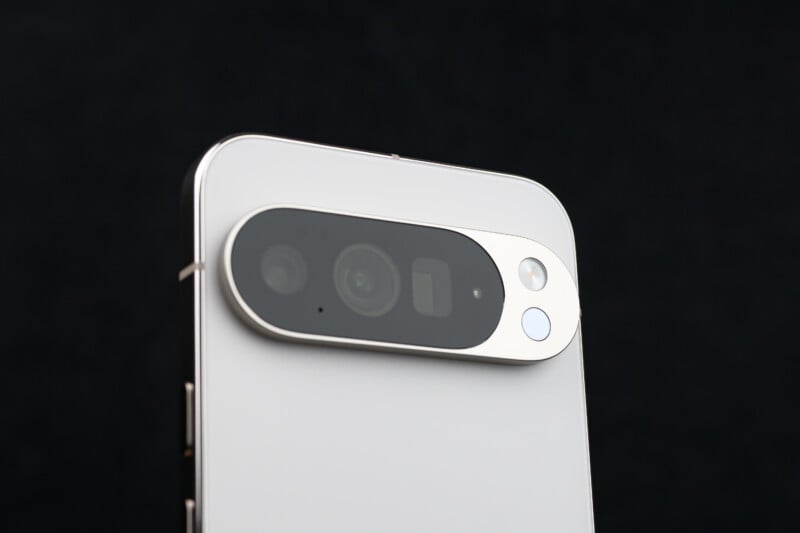
We should see slight increases in battery life given the larger battery and more efficient processors being used this year, although the more powerful AI features could rebalance this out. Color options have been slightly changed as well this year, but construction methods for the new phones are essentially identical to the previous models and it will be hard to tell the Pixel 9 and 10 apart even upon close inspection. It’s fair to say that any physical changes between the 9 and 10 series of phones are minor at best.
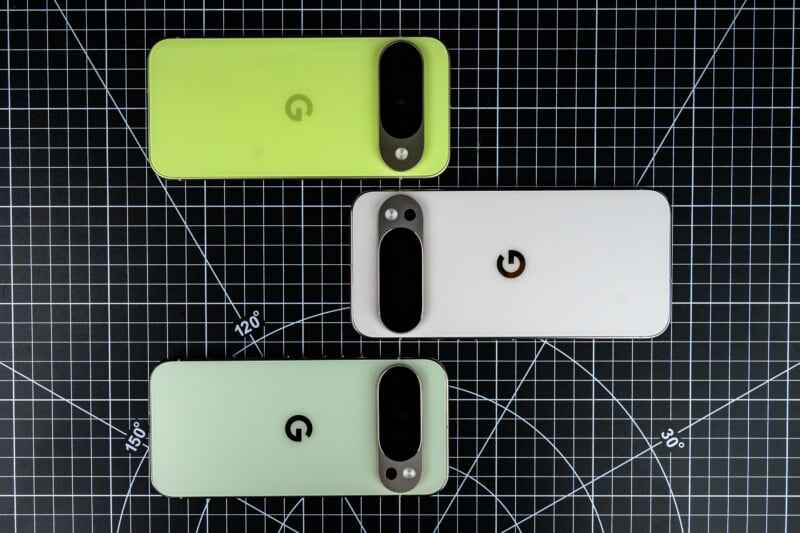
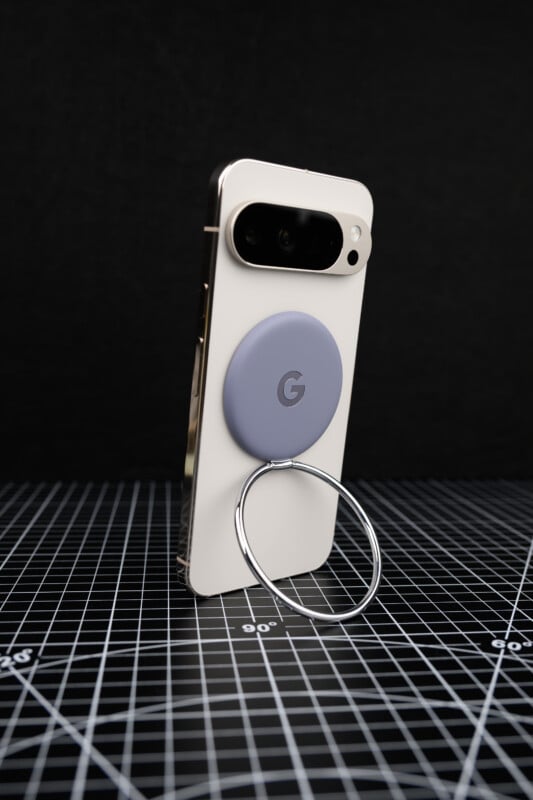
Google Pixel 10 Pro Review: The Lenses
The same three cameras return for this season, with a 48-megapixel ultra-wide f/1.7 lens mated to a Type 1/2.55 sensor, a 50-megapixel wide f/1.68 lens in front of a Type 1/1.3 sensor, and a 5x 48-megapixel telephoto f/2.8 lens paired with a Type 1/2.55 sensor. All three of these cameras make a return from the Pixel 9 Pro series; however, there are some notable changes. The optical stabilizer has been improved in the main camera, which means more usable still frames to be compiled, as well as better video stability. This fact should not be poo-pooed as more stable frames always give a noticeable increase in image quality. We also see the return of the upgraded 42-megapixel f/2.2 selfie camera this year.
![]()
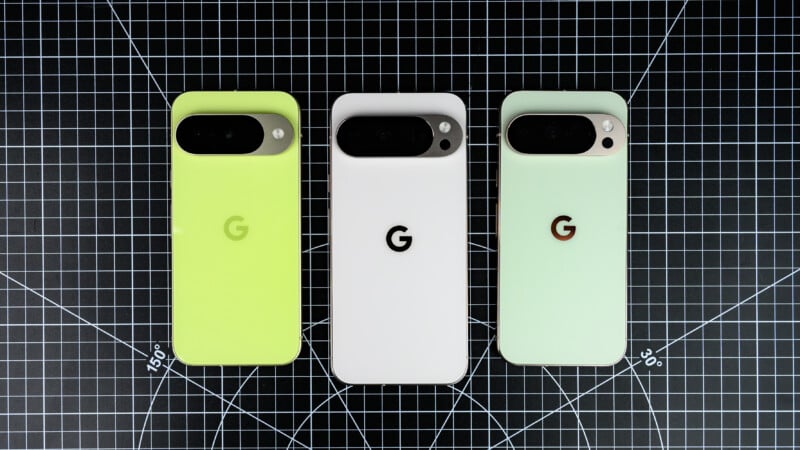
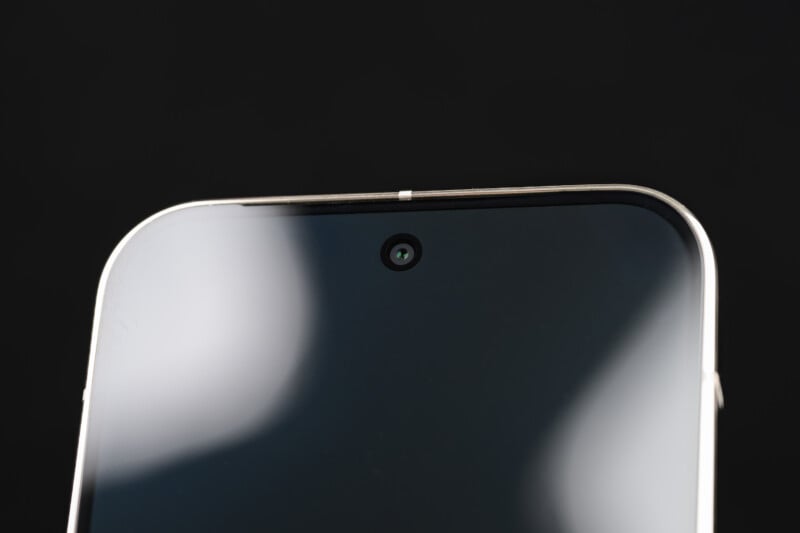
The other big change is the ability for the 5x telephoto camera to focus closer than before. That said, this only shows when specifically locking the lenses and using the telephoto lens, and the tighter frame is only marginally noticeable when using autofocus. However, using manual focusing provides a way closer macro capability than before, which allows for lots of working distance from the subject. If you do not lock the lenses separately from each other, most users will notice no difference in the macro ability of the phone, as it will simply use or switch to the main and ultra-wide camera as the phone is brought closer to the subject.


![]()
![]()
The major change to the lenses this year isn’t actually a lens change but rather an AI-assisted software effect that will be sure to stir up some controversy. Google has a new feature designed to extend the range of the telephoto camera by allowing up to a 100x zoom effect. The phone can still push the zoom range to 20x and even further by digitally restoring lost pixels and maintaining a high pixel count, but the 100x works at a 12-megapixel level only.
From what I can deduce, the phone does one of two things. It will analyze the scene and use AI to enhance the amount of detail, recreating edges and textures, while still following the structure of the original subject. Or it will flat-out replace the hard-to-identify structures with completely AI-generated objects. Sometimes the effect is quite useful, with an uncanny ability to restore lost detail akin to the security footage enhancement on an episode of CSI. However, we did also find situations where the phone will make up text or strange symbols where it feels it needs to, and I can imagine plenty of moon shots at 100x will be fully generated moonscapes to replace the white circle in the sky originally captured.


My feelings are mixed on this. On the one hand, many casual users will find the 100x zoom effect very useful for enhancing the detail of something like a bird in a tree or a humpback whale tail at sea. The quality is not going to pass muster with more experienced photographers, but your friends and family on Instagram will get a much nicer image to look at than the blurry mess that would have been shown previously. The fully AI-generated effects, though, will be a line that many will feel shouldn’t have been crossed, and I agree with them. It’s one thing to choose to add a completely AI-generated subject to an existing scene as a fun distraction, and another to completely replace what reality gave you with a fully generated subject.


Google Pixel 10 Pro Review: The Images
So many of the image editing and processing features are ones we have seen before on the Pixel 9 series, and aside from some minor changes, they are largely the same as before. The excellent Google Night Sight returns, as well as Auto Best Take and Add Me, which we’ve previously tested.
Google doesn’t lock its manual controls behind a separate app, and it’s easy as always to access RAW capture capability and filter options. Testing the dynamic range of the RAW files showed very similar results to the Google Pixel 9 Pro phones, with some ability to push and pull shadows or play with color.
Playing with the fully AI-generated prompts in the editing suite yielded very similar results to past experiences. I can change the size of subjects in my images, move them to different areas, and add whatever strange objects and scenarios I feel like experimenting with. For example, I made Jordan Drake larger in one image, moved him to the right side of the frame, entered a prompt to generate a fish in his hand, and then asked the phone to create a pile of fish on the ground. The results are hokey and silly, with obvious halos around objects and some mistakes with masking present. Again, familiar results compared to past experiences. This feature hasn’t improved much.
![]()
![]()
Still, the camera does a good job of erasing unwanted objects and moving subjects around. I wouldn’t find myself using these features, but I can see how more casual users would find some fun to be had playing with the editor. It’s very important to note that Google has added the Pixel 10 phones to the C2PA authenticity standard, which will record any AI or editing changes made to the images as a way of showing some transparency in how said images came to be. This is absolutely the right thing to do and is a positive step in ensuring that any editing is tracked and monitored to some degree.
Also notable is that Google is applying C2PA metadata to all photos, not just ones that have been altered with AI, which we called out as a major miss when Samsung added C2PA support earlier this year. So, good on Google here.
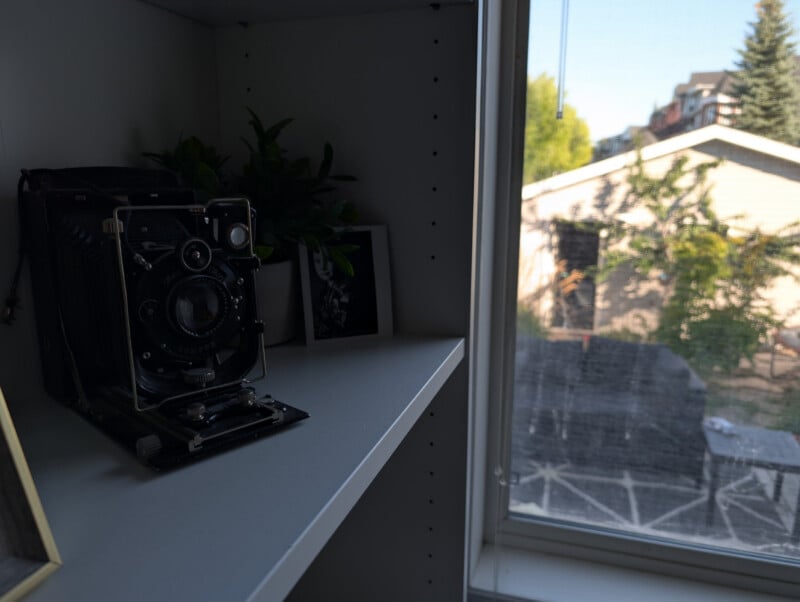
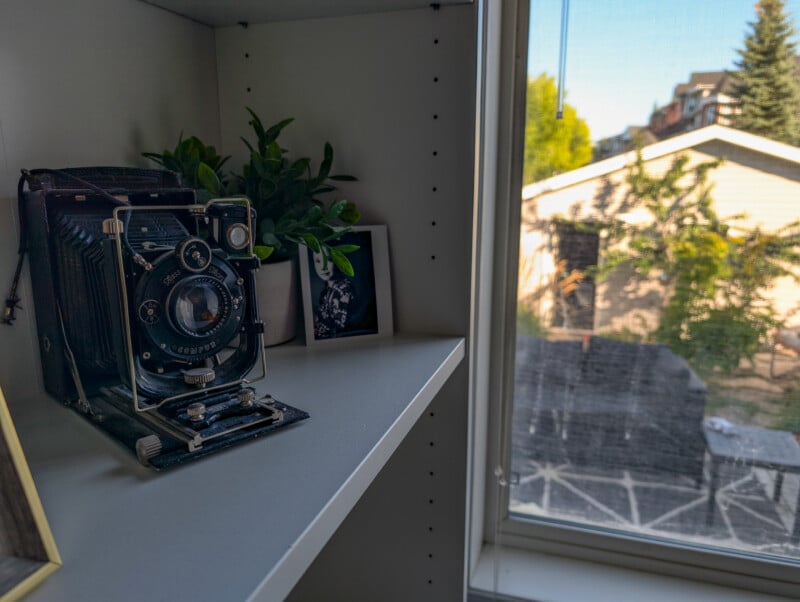
There is a new learning tool this year, which I have to say is pretty invaluable for beginner photographers. Called Google Camera Coach, I must say I was more impressed with it than I thought I would be: it is very easy to use and very slick. I even found myself appreciating some of the reminders that it suggested.
To us it, you simply frame a subject and then run the Camera Coach. The phone will analyze the scene, ask you what is important to you in it, and then give legitimately helpful suggestions to capture a better photograph. I found the interface easy to use and the process fun, making it easy to learn actually good techniques. If AI is going to be in our phones, this is the way I would prefer it to help.
On that same topic, I often rely on portrait modes in smartphones and the selective focus effect that they offer. The Google Pixel 9 Pro had poor performance in this regard, and I’m happy to report that the 10 Pro is much better. It masks the subject well, has a far less obvious transition, and handles fly-away hairs and smooth gradients of focus much better than before.

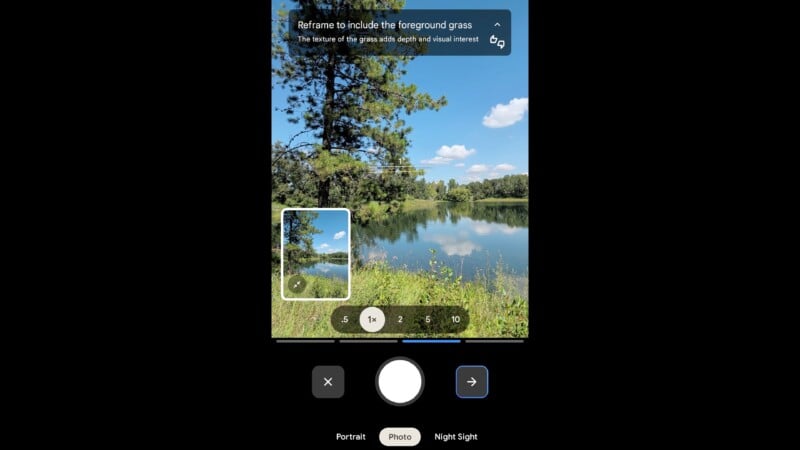
Google Pixel 10 Pro Review: Video Feels Forgotten
I wish there were more to say about the video features, but everything is essentially the same as before. Google made significant progress with the Pixel 9 Pro, and that naturally carries over. You can get 8K recording up to 30 frames per second (FPS), although this is possible only using Google’s cloud-based video boost mode that raises resolution digitally after the fact. Otherwise, 4K up to 60FPS is present, and the image quality in 10-bit HDR mode is pretty good. We also really like the Audio Magic eraser tool, which can filter out unwanted sounds right in the camera. If you liked the Pixel 9 Pro video, you’ll like this as well.
With Apple ProRes Log being available for several years now and Samsung adding its own log profile earlier this year, its absence on the Google Pixel 10 series is exceptionally notable. The Pixel series has been our least favorite for shooting video, and that is unlikely to change this year.
Google Pixel 10 Pro Review: More of the Same
I think it’s fair to say that the Pixel 10 Pro upgrades are pretty minor and, subsequently, underwhelming. As much as I enjoyed some of the new features, the only one that I would really benefit from on a regular basis is the improved portrait mode. Of course, a phone is more than just its cameras, and the AI assist tools for monitoring your correspondence or finding you great restaurants might very well be awesome to use, depending on how invasive you like your phone to be.
However, from an image-making standpoint, the Pixel 10 Pro phones are largely more of the same, and I wouldn’t upgrade from a Pixel 9. Even the Pixel 8 phones make many of the same shots that the 9 and 10 series do, and your enjoyment factor will mostly depend on how much AI you want in your images.
I firmly believe that the North American phones are hitting a hardware plateau, and attention will be diverted to the software side of things in an attempt to really wow us. As of the date I’m writing this article, I will have to wait and see what Apple and Samsung come out with to confirm if my theory is true.
Make no mistake, the Google Pixel 10 Pro is the best image maker that the company has offered, and I’ve always liked the control scheme and the more natural look to the color and detail. However, we definitely live in a world now where our smartphone images will be more AI-generated and less actual, real captures. Google is full-steam-ahead into this future of photography, for better or worse.
Are There Alternatives?
The Samsung Galaxy S25 Ultra will give you a whole host of AI features — many of which are shared with Google’s Pixel since they both run Android — and I really enjoyed the portraits and overall look to the photos it takes. Despite it being a little older, since Samsung does its release in January instead of the fall like everyone else, it feels like a competitive model to the Pixel 10 Pro, given that the updates are so minor this year.
You could also look at the Google Pixel 9 Pro, which will now be at a better price and will give you a very similar overall photographic experience. For something less expensive with fewer AI features but still a competent camera system, the Nothing Phone 3 is a solid alternative.
Should You Buy It?
Maybe. If you have been holding out for a while, the Pixel 10 Pro is an excellent phone for the photographer. If you already have a Pixel 8 or 9 Pro, though, it might be worth waiting another year.


